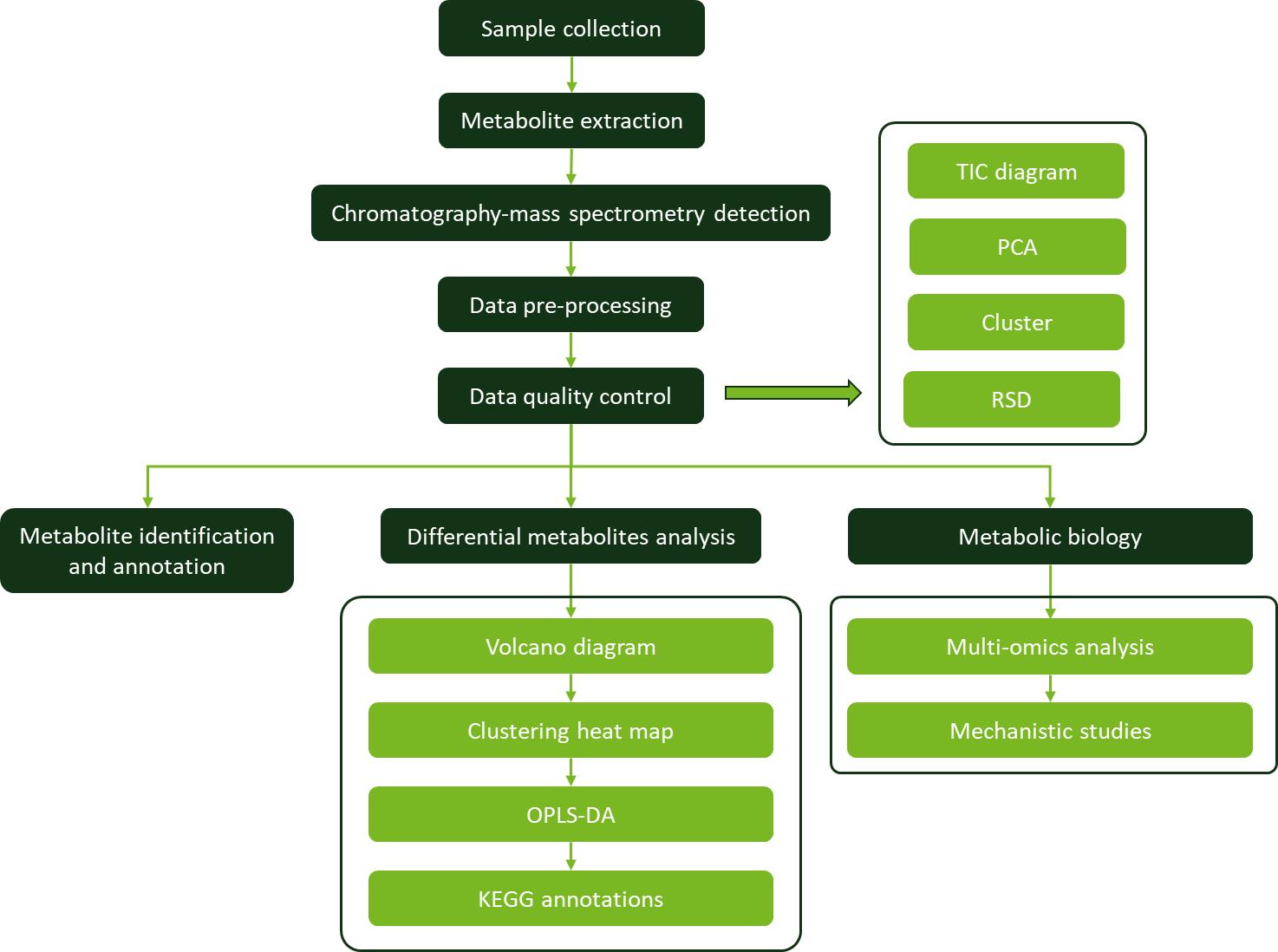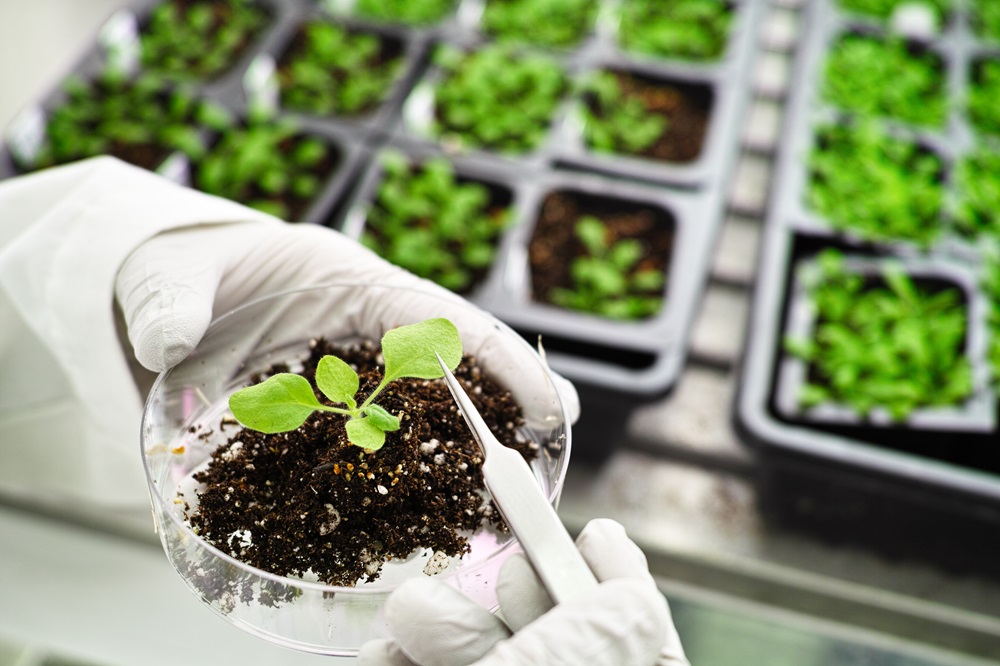What is Sesquiterpene?
Sesquiterpenes are a class of terpenes composed of three isoprene units, resulting in a 15-carbon skeleton (C15H24). These compounds represent a diverse group of secondary metabolites widely distributed in nature, particularly within higher plants, marine organisms, and fungi. Structurally, sesquiterpenes are found in various forms, including hydrocarbons and oxygenated derivatives such as alcohols, aldehydes, ketones, acids, and lactones. Their structural diversity gives rise to numerous basic skeletons, each with distinct biological properties and nomenclature. The natural abundance of sesquiterpenes, along with their complex biosynthetic pathways, contributes to their significant role in ecological interactions, such as plant defense mechanisms and pollinator attraction.
Sesquiterpene analysis is crucial for understanding the chemical defenses of plants. By identifying and quantifying sesquiterpenes, researchers can assess how these compounds contribute to plant resistance against pests and diseases. This knowledge can guide the development of pest-resistant crop varieties, enhance crop protection strategies, and improve agricultural sustainability. Additionally, sesquiterpenes have potential applications in pharmaceuticals, flavorings, and fragrances, making their analysis valuable across multiple industries.
Sesquiterpene Analysis Services by Creative Proteomics
Creative Proteomics offers plant target metabolomics analysis designed to meet the rigorous demands of researchers and industries involved in natural product chemistry, pharmacology, and biotechnology.
Our sesquiterpene analysis service encompasses the qualitative and quantitative assessment of sesquiterpenes from a wide range of biological matrices. Our service encompasses the identification, quantification, and structural elucidation of sesquiterpenes, utilizing state-of-the-art analytical techniques to ensure accurate and reliable results. Creative Proteomics offers the following sesquiterpene analysis services:
Sesquiterpene Profiling
Comprehensive analysis of sesquiterpene compounds, including both known and novel sesquiterpenes, with qualitative and quantitative assessments.
Sesquiterpene Quantification
Accurate quantification of target sesquiterpene compounds using high-precision techniques such as GC-MS and LC-MS/MS.
Structural Elucidation of Sesquiterpenes
Detailed structural analysis of novel or complex sesquiterpene compounds using techniques like NMR and mass spectrometry.
Chiral Sesquiterpene Analysis
Analysis and separation of chiral sesquiterpene compounds, assessing the biological activities of different enantiomers.
Sesquiterpene Biosynthesis Pathway Analysis
Study and analysis of the biosynthesis pathways of sesquiterpenes in plants or other organisms to reveal their metabolic networks.
Sesquiterpene Metabolomics
Comprehensive analysis of sesquiterpene metabolites in biological samples using mass spectrometry and metabolomics techniques.
List of Sesquiterpene Analyzed (including but not limited to)
| Farnesene |
Bisabolol |
Humulene |
Caryophyllene |
Cedrene |
| Farnesol |
Zingiberene |
Aristolochene |
Germacrene |
Geosmin |
| Patchoulol |
Santalol |
Artemisinin |
Costunolide |
Thapsigargin |
| Parthenolide |
Valencene |
Selinene |
Nootkatone |
Aromadendrene |
| Guaiol |
Cubebol |
|
|
|
Service Components for Humulene Analysis
Gas Chromatography-Mass Spectrometry (GC-MS)
GC-MS is a powerful tool for the separation and identification of volatile sesquiterpenes. The technique involves the vaporization of the sample, followed by the separation of its components in a gas chromatograph. The separated compounds are then ionized and detected by mass spectrometry, which provides both qualitative and quantitative data. GC-MS is particularly effective for analyzing hydrocarbon sesquiterpenes and their oxygenated derivatives, allowing for detailed profiling of complex mixtures.
Liquid Chromatography-Mass Spectrometry (LC-MS)
For non-volatile or thermally labile sesquiterpenes, LC-MS is the preferred method. This technique involves the separation of sesquiterpenes in a liquid chromatograph, followed by detection via mass spectrometry. LC-MS offers high sensitivity and specificity, making it ideal for the analysis of sesquiterpene lactones, alcohols, acids, and other derivatives. The combination of LC with tandem mass spectrometry (LC-MS/MS) allows for structural elucidation and accurate quantification, even in complex biological matrices.

Applications of Sesquiterpene Analysis
Pharmacological Research: Sesquiterpenes are a rich source of bioactive compounds with potential therapeutic applications. Analysis of these compounds can lead to the discovery of new drugs,
Natural Product Chemistry: Understanding the sesquiterpene composition of plant extracts and other natural sources aids in the identification of novel compounds, the elucidation of biosynthetic pathways, and the study of ecological interactions.
Flavor and Fragrance Industry: By characterizing the sesquiterpene content of essential oils and plant extracts, manufacturers can ensure the quality and consistency of their products.
Agricultural Science: Analyzing these compounds helps in the development of natural pesticides and plant protection strategies.
Environmental and Ecological Studies: The analysis contributes to the understanding of these interactions and the role of sesquiterpenes in ecosystem dynamics.
Sample Requirements for Sesquiterpene Analysis
| Sample Types |
Minimum Quantity |
Storage Conditions |
Biological Repeat |
| Plant Samples |
Leaf tissue, root, stem, flower |
≥ 1 g |
-80°C, shipped with dry ice |
3-6 |
| Liquid Samples |
Essential oils, plant extracts, biofluids |
≥ 0.5 mL |
| Specialty Samples |
Cell cultures, fermentation broths, environmental samples |
≥ 1 x 10⁷ cells |
Q1: What are the costs associated with sesquiterpene analysis, and are there any additional fees?
A1: The cost of sesquiterpene analysis varies based on the type of analysis required (e.g., profiling, quantification, structural elucidation) and the number of samples. Additional fees may apply for custom analysis, expedited services, or specialized techniques. We provide a detailed quotation after reviewing your specific requirements and sample details. Please contact us.
Q2: Are there any specific sample preparation requirements before submission?
A2: Yes, it is important to follow specific sample preparation guidelines to ensure optimal results. Plant samples should be properly dried and ground, liquid samples should be stored in sterile containers, and specialty samples like cell cultures should be kept frozen and shipped with dry ice. Detailed sample handling instructions are provided upon request to ensure compliance with our analysis protocols.
Case. Analysis of Leaf Surface Sesquiterpenes in Potato Varieties
Background
Potato (Solanum tuberosum) is a major commercial crop, susceptible to various pathogens and pests. To combat these threats, potato plants produce a range of secondary metabolites, including sesquiterpenes, which play a role in defense mechanisms. Previous studies have identified some of these sesquiterpenes, but a comprehensive analysis of their quantitative profiles across multiple potato varieties was lacking. This study aimed to fill this gap by analyzing sesquiterpene content in the leaf surfaces of ten different potato varieties.
Samples
The study focused on ten potato varieties: Aster, Drop, Lotos, Sumak, Mila, Bryza, Arkadia, Vistula, Wolfram, and Wawrzyn.
Plants were cultivated under uniform conditions at the Plant Breeding and Acclimatization Institute at Bonin, with leaf samples collected 60 days post-planting.
Technical Methods Procedure
Sesquiterpene Extraction: Fresh leaf samples were extracted with methylene chloride. Extracts were fortified with an internal standard, dried, filtered, and concentrated. Leaf surface areas were estimated for quantification purposes.
Column Chromatography: A portion of the leaves from the Mila variety was subjected to steam distillation, followed by extraction and separation on silica gel columns. The separation resulted in fractions of sesquiterpene hydrocarbons and alcohols.
Gas Chromatography (GC): GC analysis was performed on various columns to separate and identify sesquiterpenes. Kovats retention indices were used for identification, with quantification achieved through comparison with internal standards.
Mass Spectrometry (MS): Mass spectra were recorded to confirm sesquiterpene identities, with comparison to literature data.
Nuclear Magnetic Resonance (NMR): NMR spectra were obtained for detailed structural analysis of sesquiterpene alcohols. The spectra were compared to known structures for identification.
Chemometric Analysis: Quantitative data were analyzed using cluster and principal component analyses (PCA) to identify patterns and classify potato varieties based on sesquiterpene profiles.
Results
Sesquiterpene profiles were found to be variety-specific, with β-caryophyllene, germacrene D, and β-sesquiphellandrene being the predominant components in most varieties.
Chemometric analysis revealed two distinct groups: the Vistula variety, characterized by high levels of β-caryophyllene, α-humulene, germacrene D, and germacrene D-4-ol; and the Mila variety, distinguished by β-elemene, trans-α-bergamotene, (Z)-β-farnesene, (E)-β-farnesene, trans-β-bergamotene, β-sesquiphellandrene, and unidentified sesquiterpene alcohols.

Reference
- Szafranek, Beata, et al. "Analysis of leaf surface sesquiterpenes in potato varieties." Journal of agricultural and food chemistry 53.8 (2005): 2817-2822.










